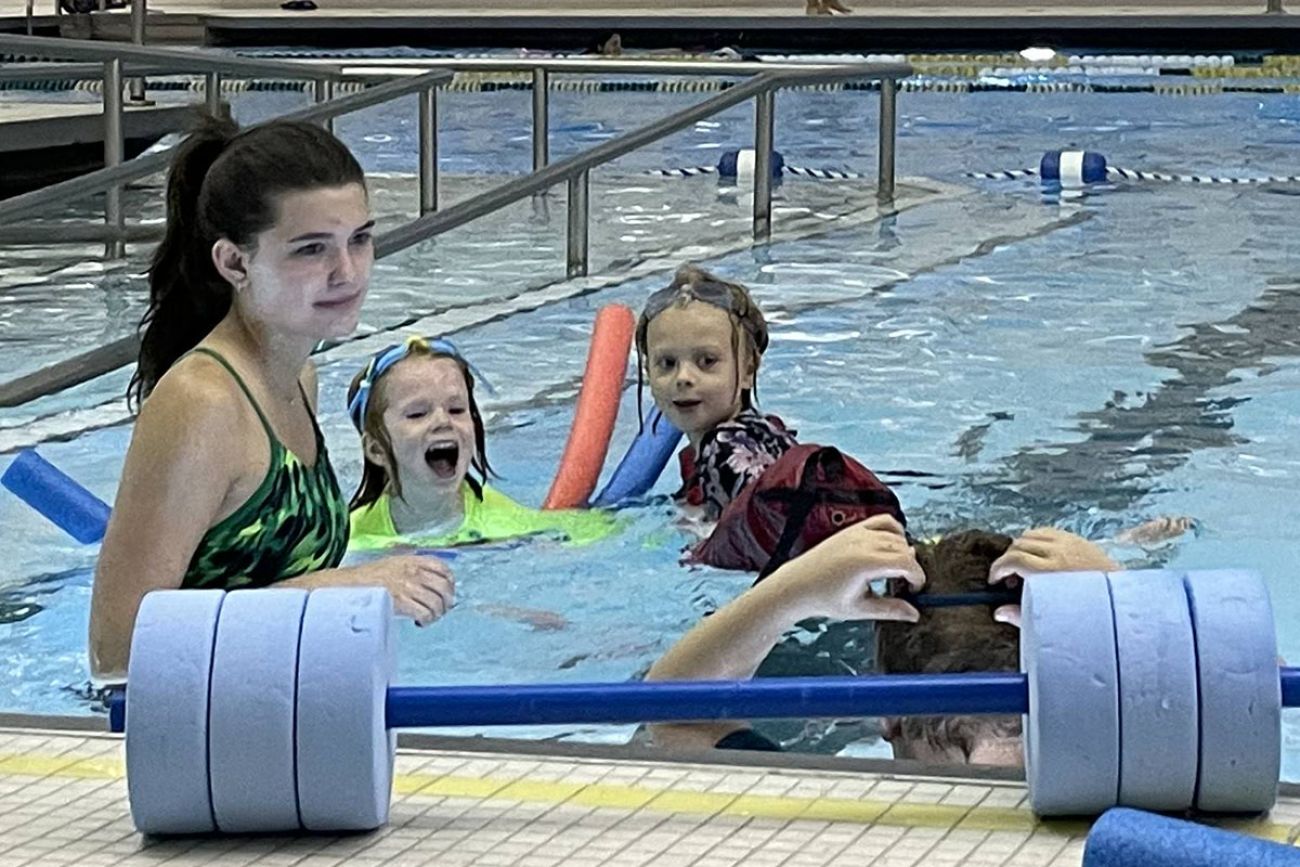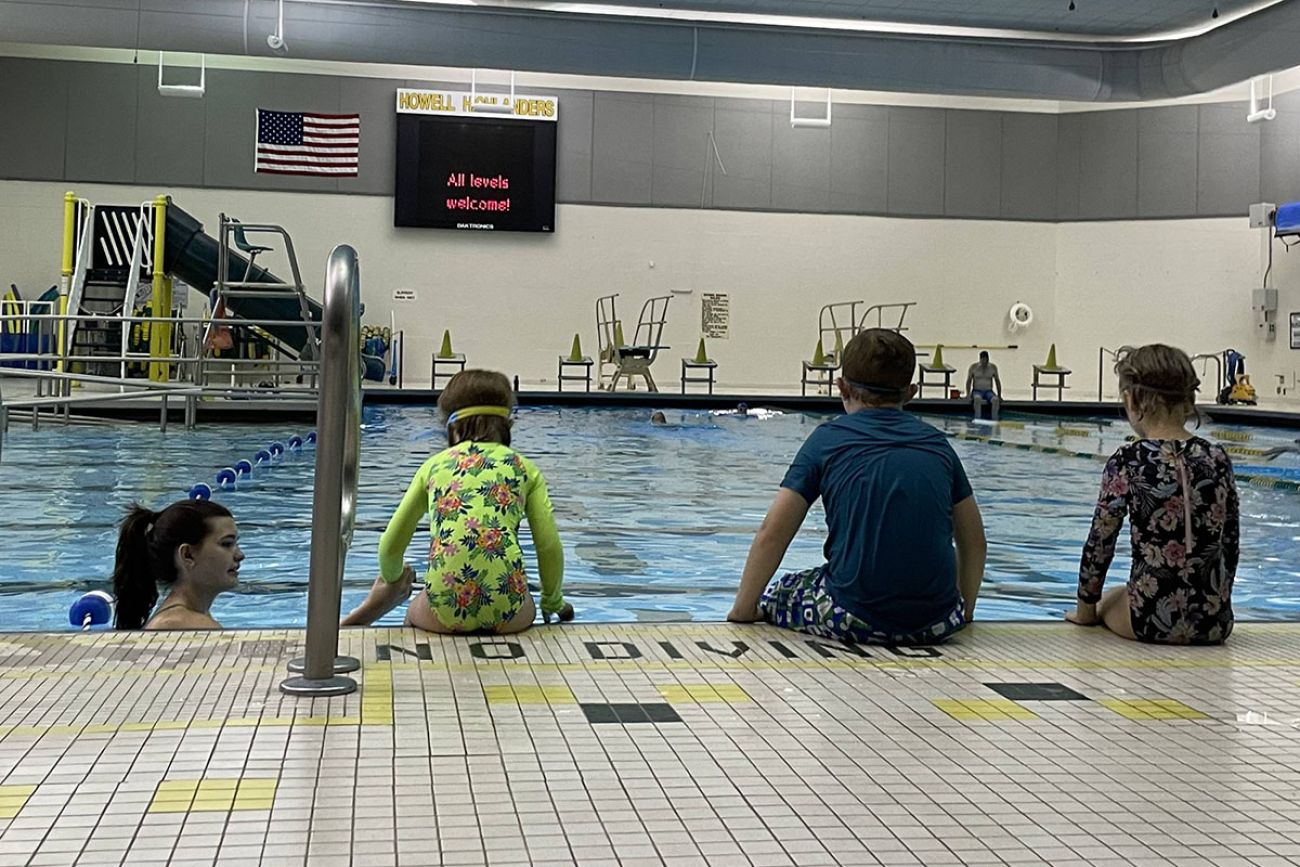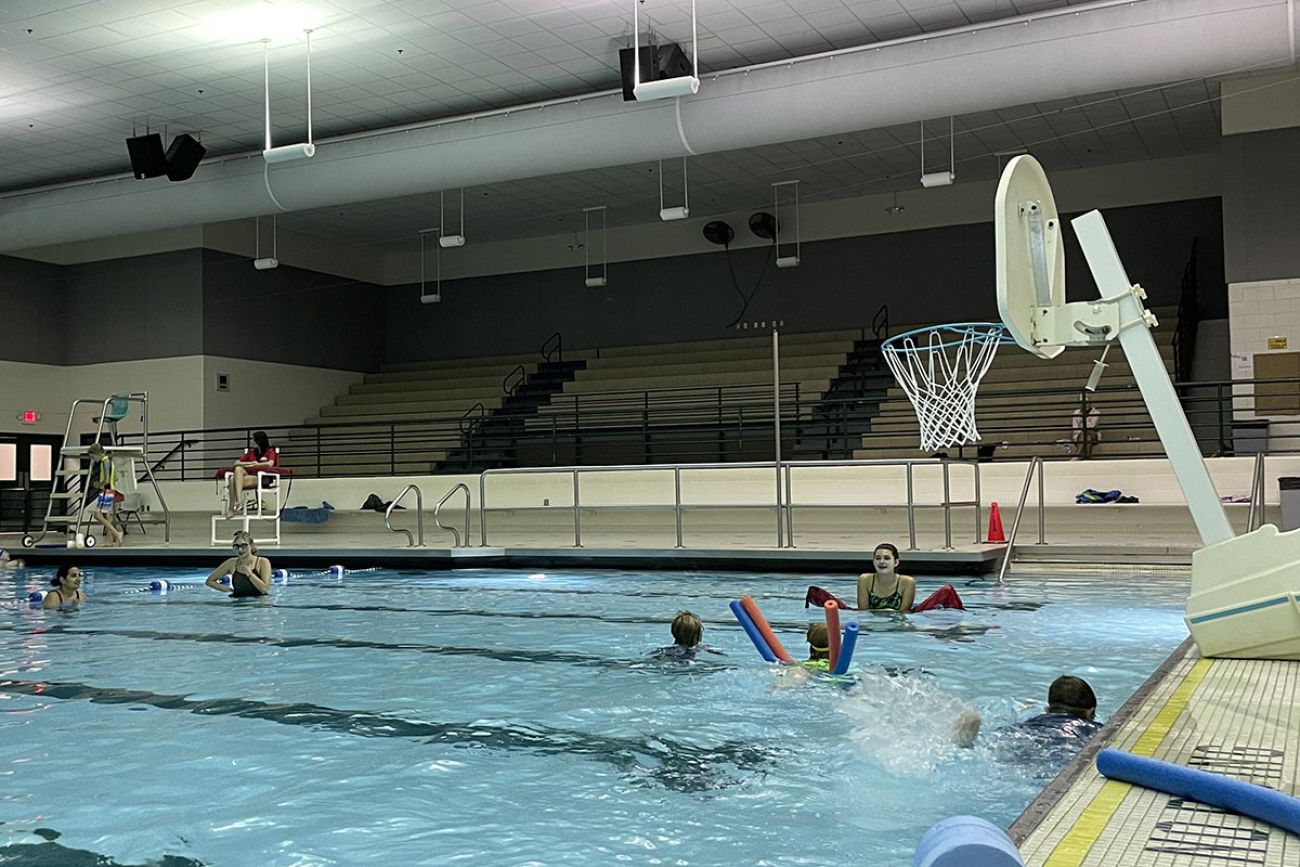Free swim lessons part of larger Michigan effort to reduce drownings

- Huron-Clinton Metroparks is offering free swim lessons so children from lower-income families can learn swimming skills
- Free lessons are part of a larger effort to better educate swimmers and reduce drownings, particularly along the Great Lakes
HOWELL—Strapped with goggles and neon-colored pool noodles tucked under their bodies, three young students paddle towards Coach Mia Dodd as she walks backward, looping around the shallow end of the pool.
Fearlessly kicking their feet and blowing bubbles, they make their way past the pool dividers, where the pool floor begins to dip down. Dodd holds their hands one by one, as they learn to safely sit on the edge of the pool and jump in.

Every Tuesday through Thursday morning, Laurie Jonckheere watches her two granddaughters receive free swim lessons at this pool in Howell.
Related:
- Drownings are up across the Great Lakes. Michigan officials urge water safety
- Great Lakes surfers to Michigan: Don’t close beaches during rough waves
- Michiganders to face tickets next spring for swimming in dangerous waves
“They’ve always both liked the water,” Jonckheere said. “It’s good for people to know how to swim. You never know when you’re going to need to do it on an emergency basis.”
Teaching youngsters swimming skills is part of a larger effort to reduce drownings in Michigan, particularly on the Great Lakes.
The Great Lakes can be dangerous for swimmers when the weather changes. Drowning deaths have gradually increased across the Great Lakes from 74 in 2010 to 108 last year, according to the Great Lakes Surf Rescue Project (GLSRP).
According to the rescue project, there have been 15 drowning deaths so far this year.
On Wednesday morning, Dodd led this swim lesson at the Highlander Aquatic and Fitness Center, part of a collaboration between Huron-Clinton Metroparks and Southeast Michigan swim facilities aimed at closing the poverty gap in communities where many families can’t afford swim lessons. The partnerships taught more than 1,000 children to swim last summer and has grown to 1,300 students this summer.

Through feedback from park visitors and surveys, Huron-Clinton Metroparks officials say there is broad interest in swimming and water facilities, but expenses can be a barrier for many Detroiters and children of color.
Danielle Mauter, a metroparks spokesperson, said a staggering 70 percent of children in Detroit have little to no swimming experience.
“Our ultimate goal is to be for every single person in southeast Michigan to know how to swim,” Mauter said. “Each year the Metroparks are interested in growing the number of lessons served year over year and that was our big focus this summer.”
Summer is also when swimmers hit the beaches across Michigan. In recent years, the state has taken steps to protect their safety, including fining swimmers who go into the water despite double red flag warnings that the waters are dangerous at designated state park swim beaches.
The “double red flag” was introduced last summer to indicate residents are prohibited from going into the water, with exceptions for “board sport recreational individuals” including surfers, kiteboarders and more.
Although the park flags run consistently on state beaches, the Michigan Department of Natural Resources (DNR) does not have control over how a city or township beach flag system is run, said Pat Whalen, district supervisor for the Parks and Recreation Division at DNR. State and city beaches have different meanings for the red flag, he said.
For example, in South Haven, a red flag signals the water is closed and swimmers will be fined $1,000 if they ignore the warning. But a 10-minute drive away, Van Buren State Park follows DNR’s flag system where a red flag is a recommendation to stay out of water, not an order, with no fine imposed for doing so, said Dave Benjamin, co-founder and executive director of GLSRP.
Michigan’s beach flags are “consistently inconsistent,” Benjamin said, which leads to some drownings being blamed on a lack of awareness of water conditions. He said 66 percent of drownings involve people who know how to swim.
Not understanding the meaning of safety flags can leave even competent swimmers vulnerable.
“There’s no education and enforcement there, so it dilutes the meaning of the flag,” Benjamin said. “We do want everyone to learn how to swim, but we also want them to understand that knowing how to swim isn’t water safety.”
Even good swimmers can drown if they are not taught how to handle a rip current, a common challenge on the Great Lakes.
Rip currents — sometimes called riptides — are less of a focus in swim classes as most lessons take place in pools, Mauter said; although some lessons take place on open water beaches, touching on lake safety.
Last year, Illinois passed the Lake Michigan Rescue Equipment Act, requiring water rescue equipment on all private and public Lake Michigan waterfronts in that state. Bob Pratt, co-founder and executive director of GLSRP, said he wants to see similar legislation in Michigan.
In addition to its summer program, Huron-Clinton Metroparks offered free swim lessons this past school year. Though many locations are booked, more locations and lesson times will be added throughout the summer. In addition to free lessons for children ages 5 and older, they also receive a swimsuit, swim cap, goggles, bag and towel.
Michigan Environment Watch
Michigan Environment Watch examines how public policy, industry, and other factors interact with the state’s trove of natural resources.
- See full coverage
- Subscribe
- Share tips and questions with Bridge environment reporter Kelly House
Michigan Environment Watch is made possible by generous financial support from:
Our generous Environment Watch underwriters encourage Bridge Michigan readers to also support civic journalism by becoming Bridge members. Please consider joining today.
See what new members are saying about why they donated to Bridge Michigan:
- “In order for this information to be accurate and unbiased it must be underwritten by its readers, not by special interests.” - Larry S.
- “Not many other media sources report on the topics Bridge does.” - Susan B.
- “Your journalism is outstanding and rare these days.” - Mark S.
If you want to ensure the future of nonpartisan, nonprofit Michigan journalism, please become a member today. You, too, will be asked why you donated and maybe we'll feature your quote next time!






